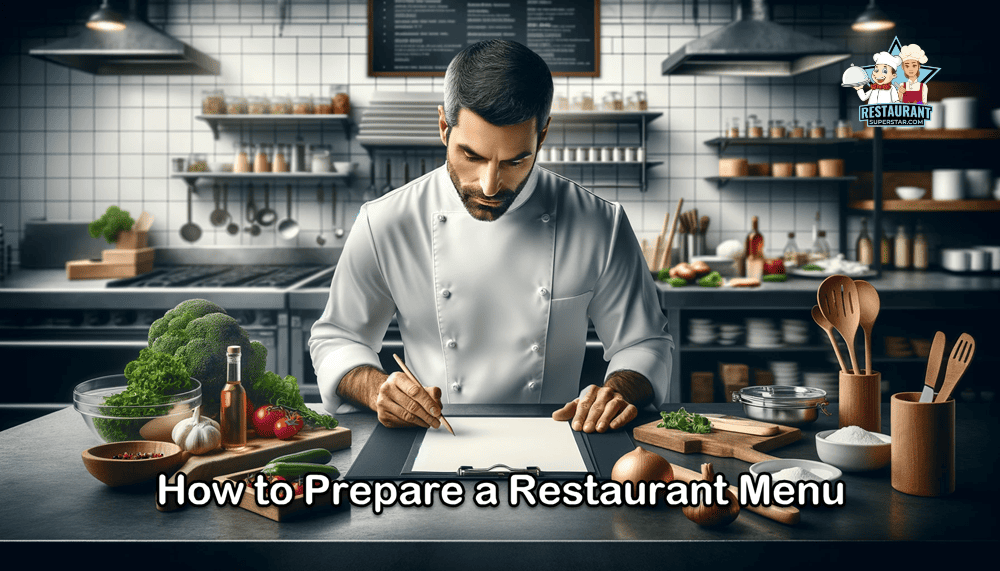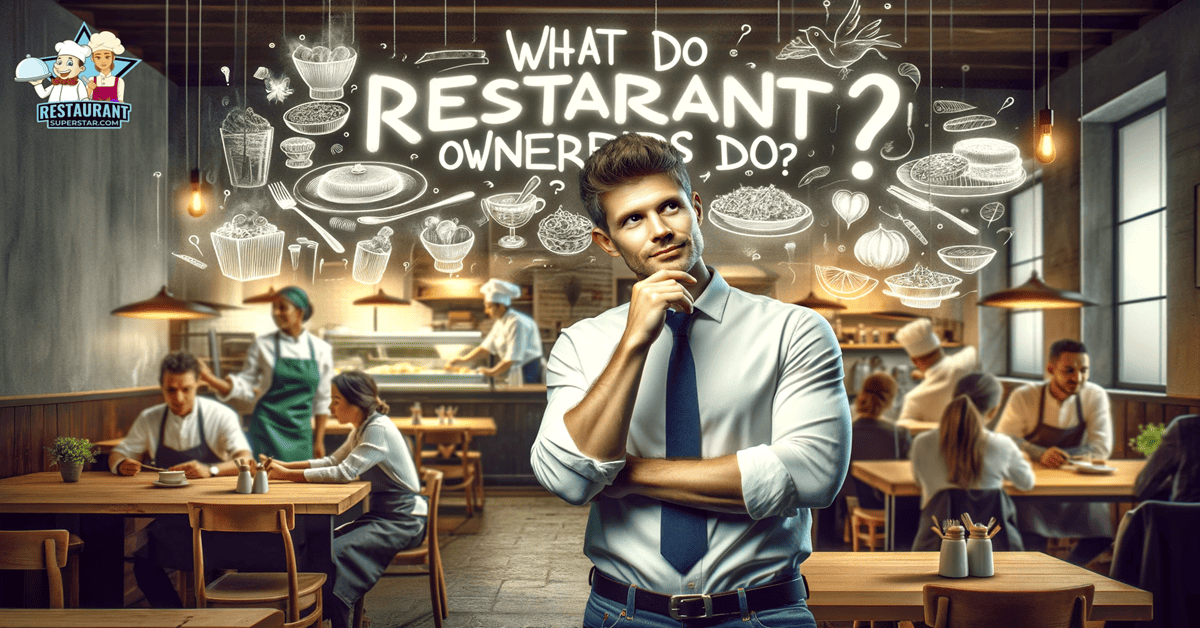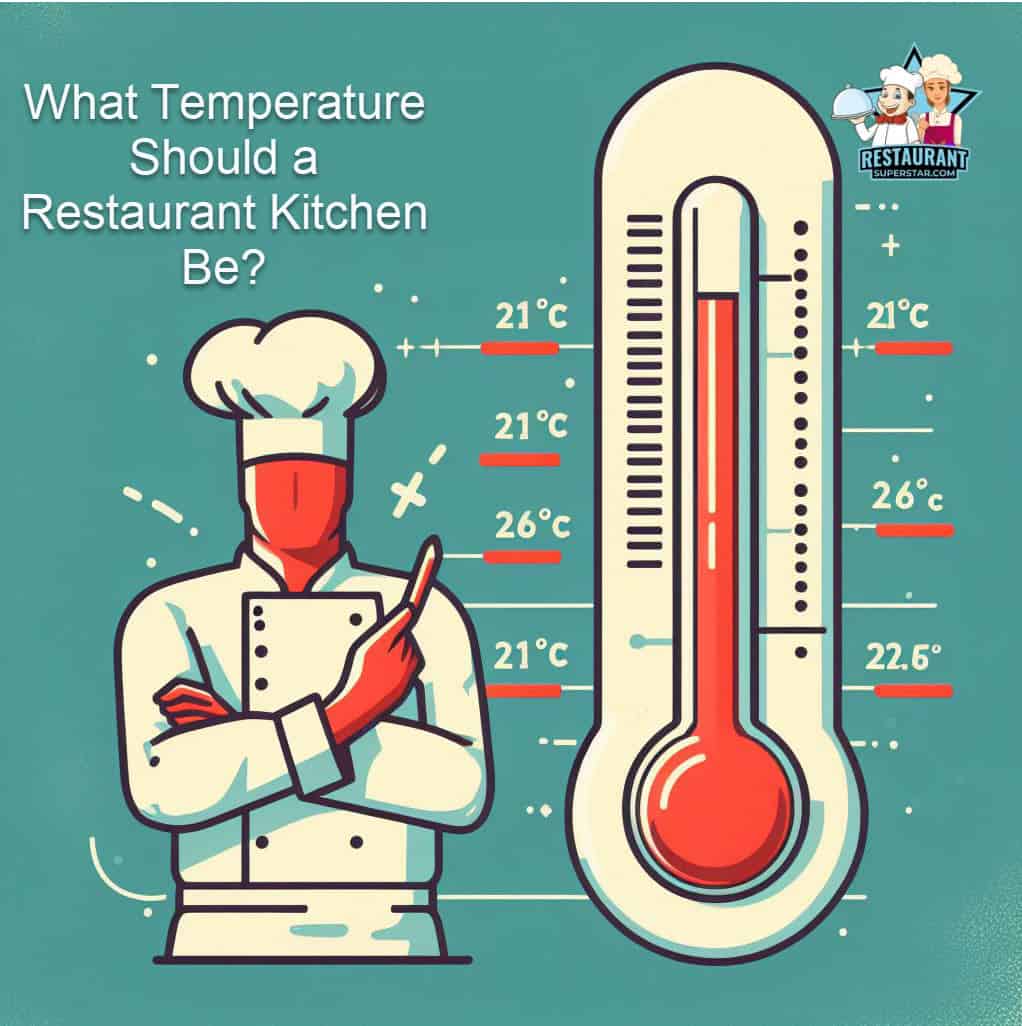How Much Does Restaurant Hood Cleaning Cost?
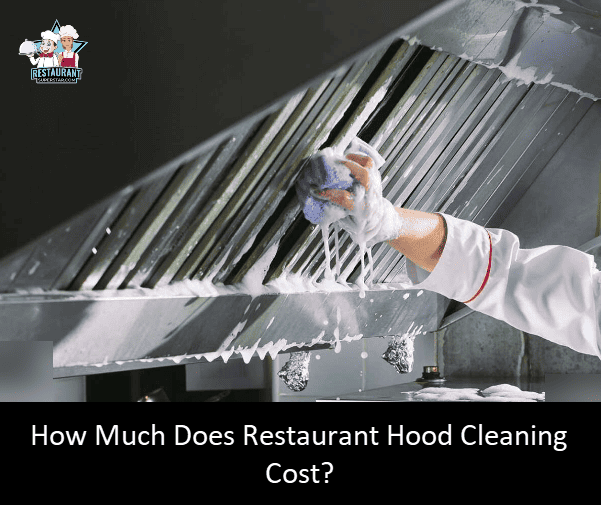
You are in the right place if you’re pondering, “How much does restaurant hood cleaning cost?”
This article is crafted to demystify this query and delve into other essential related questions, setting a clear financial roadmap for your restaurant’s kitchen maintenance.
As a restaurant owner, grasping these expenses is pivotal for budgeting and operational efficiency.
How Much Does Restaurant Hood Cleaning Cost?
How much does restaurant hood cleaning cost? The cost hinges on many factors, including your hood system’s location, size, condition, and configuration. On average, the national rate hovers around $100 per hour for a two-technician team. Yet, the starting charge for such services ranges from $400 to $450, encompassing the cleaning of ducts, hood canopy, baffle filters, and blast fans. Additional tasks, say, elongated duct systems cleaning or water supply provision, incur extra charges.
Obtaining a free estimate from a seasoned hood cleaning service before engagement is prudent.
Now that you have a ballpark figure, the financial aspect of restaurant hood cleaning is just the tip of the iceberg.
This article unfolds a wealth of insights surrounding how much does restaurant hood cleaning cost, shedding light on the multifaceted components influencing the price, the cleaning process, and much more.
As we navigate, you’ll garner a thorough understanding of what to anticipate, ensuring you get value for every penny spent on maintaining a clean, safe, and efficient kitchen exhaust system.
Stay tuned as we unravel the nitty-gritty of restaurant hood cleaning costs, ensuring you’re well-informed in making the right decisions for your culinary establishment.
The Factors Influencing Restaurant Hood Cleaning Cost
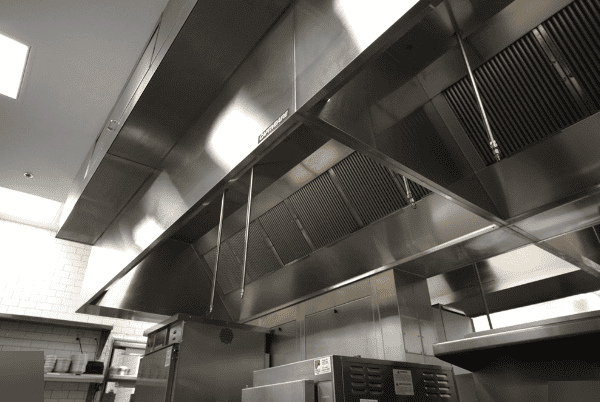
Alright, let’s delve into the various factors that play a role in the cost of getting that hood spic and span.
Understanding these factors can give you a ballpark figure before you even get that quote, and trust me, there are no surprises here – just simple, straight-up facts.
Location of the Restaurant
Location, location, location – it’s not just a mantra for real estate but rings true for hood cleaning costs.
Suppose your restaurant is in a bustling city or a densely populated area like Miami or Orlando. In that case, the cost of hood cleaning services is higher.
Conversely, the costs might be slightly lower if operating in a smaller town or a rural area.
The proximity to a cleaning service provider also impacts the cost. If a company has to travel a long distance to get to you, they might charge a bit more to cover their travel expenses.
And hey, it’s understandable.
Size and Configuration of the Hood System
The size of your hood system is a biggie regarding cleaning costs. A more extensive hood system with more ductwork will take longer to clean, hence a higher price tag.
The configuration also plays a role – if your system has multiple bends, twists, or hard-to-reach areas, it may require more time and specialized tools to get the job done right.
Every hood has unique quirks, and understanding your system’s layout can help you gauge the effort and time needed to clean it thoroughly.
Condition of the Hood System
Let’s be honest: if your hood system has not seen a good scrub in ages, it will take much more elbow grease to shine again.
A hood that’s well-maintained and cleaned regularly will be more accessible (and cheaper) to clean than one that’s been neglected. The amount of grease buildup is the usual suspect here.
If a thick layer of grease clogs up the works, it will take longer to clean, and yes, that will cost more.
Water Availability and Additional Requirements
Water is essential for cleaning; it’s a plus if your restaurant has a readily available water supply.
However, suppose the cleaning crew has to bring in water or other additional requirements, such as covering your appliances with protective sheeting or extra equipment. In that case, these extras will be reflected on the bill.
It’s always a good idea to discuss these additional requirements upfront with the cleaning service to avoid any surprise charges.
Understanding these factors can help you budget better and have a smoother conversation with the hood cleaning service.
It’s all about ensuring you get a thorough cleaning without any hidden costs sneaking up on you.
Plus, knowing a bit about how much does restaurant hood cleaning cost based on these factors can give you a leg up when negotiating the price.
So, next up, let’s talk about the nitty-gritty of the costs and what you can expect to shell out to keep that kitchen hood clean and efficient!
Breaking Down the Costs: What to Expect?
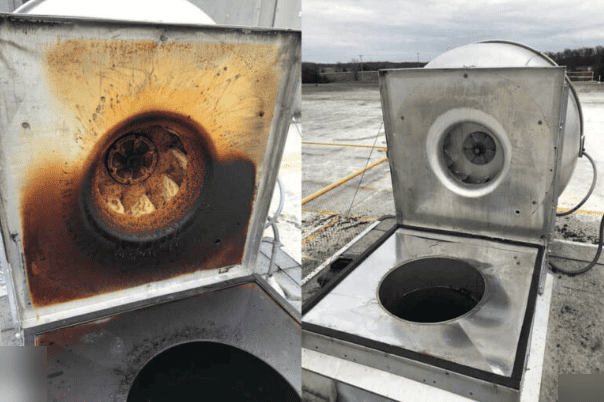
When it comes to understanding the cost of cleaning a restaurant hood, it’s essential to break down the elements contributing to the overall price.
It’s not just about the hourly rate; several other factors could add to the total cost.
Let’s take a closer look at some of these aspects to give you a clearer picture of what you might be looking at financially.
Average Hourly Rates and Minimum Charges
The nationwide average for hood cleaning services is typically around $100 per hour for a pair of technicians.
However, the rates might be higher or lower in sunny Florida, depending on the competition and the local market.
The initial cost usually involves a minimum charge ranging from $400 to $450. This base price generally covers the duct cleaning, hood canopy, baffle filters, and the up-blast fan.
It’s a package deal that ensures your hood system is thoroughly cleaned.
Additional Costs for Extra Cleaning
Suppose your hood system has been playing host to grease for a long time or has a more extended duct system due to a multi-story kitchen. In that case, you’re looking at additional costs.
The extra effort to clean long duct systems or bring in water supply (if unavailable) will also be charged.
And, if your hood system requires a more detailed cleaning or if there’s a need for scraping instead of washing, the price will nudge up. It’s like going for a car wash; the more detailed the cleaning, the higher the price.
Long Duct Systems or Water Supply
The length and complexity of your duct system play a significant role in the cost. More extended duct systems or those with complex configurations require more time and effort to clean.
Suppose your restaurant is in a multi-story building, for example. In that case, the ducts are probably longer, so the cleaning cost will be higher.
Also, water is a crucial part of the cleaning process.
If your restaurant doesn’t provide water, the cleaning service will have to bring in their water supply, which adds to the cost.
Having water readily available is always a good idea to avoid this additional charge.
Summing Up
I’ve always believed in transparency, mainly regarding financial matters. Understanding the breakdown of costs associated with hood cleaning will help you budget better and avoid surprises when the bill comes.
Plus, it also gives you a better footing when negotiating with cleaning services.
And remember, getting a free estimate from a professional hood cleaning service before hiring them is always wise.
It gives you a clear picture of what to expect, and you can budget accordingly. Stay informed, and you’ll find managing how much does restaurant hood cleaning cost becomes a much more straightforward affair.
Hourly Rate vs Flat Fee: Which One is Better?
Ah, the age-old problem of choosing between an hourly rate and a flat fee. This choice impacts how much does restaurant hood cleaning cost for your establishment.
Both pricing structures have their merits, and I’ve seen restaurant owners being proponents of both. Let’s dive into the details of each to help you make a more informed decision.
Hourly Rate Hood Cleaning
The hourly rate pricing model is pretty straightforward; you’re charged a fixed rate for every hour the cleaning crew works on your hood system.
The average hourly cost can range from $135 to $180, although this rate can inflate if a larger crew is needed.
Some additional charges might pop up, including:
- Additional exhaust fans: $50 to $75 each
- Cleaning filters: Around $5 each
- Access panels (if needed): Around $150 each
And let’s remember the minimum charge for showing up, which can fluctuate between $50 to $250 depending on the crew and the location. This model is transparent, and you pay for the actual cleaning time. Still, it can get costly if complications arise during the cleaning process.
Flat Fee Hood Cleaning
On the other hand, the flat fee pricing model offers a fixed price for the entire job. Here, each aspect of cleaning has a predetermined rate.
The average flat fee for hood cleaning hovers around $400 to $425.
The breakdown might look something like:
- Per linear hood foot: $10 to $20
- Per fan: $40 to $60
- Per access panel: $55 to $75
Similar to the hourly model, there’s a minimum charge for showing up and extra fees if it’s a first clean, a forced clean by the Health Department, or if there are long/complicated duct runs.
My Two Cents
Having worked with numerous restaurant owners in Florida, I’ve gained insights into which pricing model might work better.
The flat fee model offers predictability. You know the cost upfront, which aids in budgeting, especially if you’re running a tight ship.
However, the hourly rate model can save money if your hood system is well-maintained and the cleaning crew can do the job quickly.
It also offers a pay-for-what-you-need approach, which some restaurant owners appreciate.
Suppose you have a well-maintained system and you’ve established a good rapport with a trustworthy cleaning service. In that case, the hourly rate is the more economical choice.
However, you prefer knowing the cost upfront and want to avoid any unexpected charges. In that case, the flat fee model is your friend.
In either case, clearly understanding the pricing and a good relationship with a reputable cleaning service can significantly impact how much restaurant hood cleaning costs and how smoothly the cleaning process goes.
Commercial Hood Costs vs Cleaning Costs
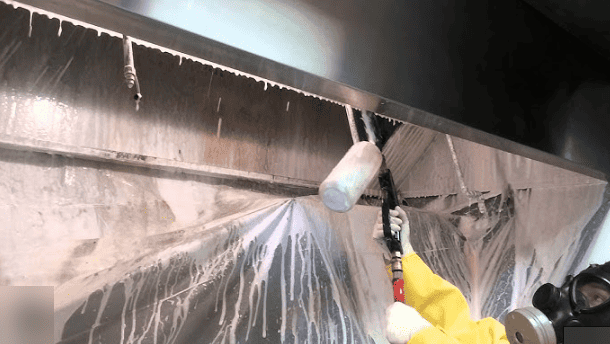
When you enter the restaurant business, you’ll encounter various expenses, and one significant investment is a commercial hood system.
It’s like the unsung hero in your kitchen, working tirelessly to whisk away smoke, grease, and odors, ensuring your kitchen remains airy and complies with local fire codes.
Let’s discuss the recurring costs of keeping this essential equipment clean and what they mean for your restaurant’s bottom line.
The Price Tag on a New Commercial Hood
- Initial Investment: Installing a new commercial hood system can set you back anywhere from $1,000 to over $20,000, depending on the size, type, and features of the hood. This cost doesn’t even include the installation fees, which can rack up the total expense.
- Maintenance Costs: Besides the upfront cost, there’s the routine maintenance to keep it running efficiently. This includes filter replacements and minor repairs, which are inevitable as the system ages.
Regular Cleaning Costs
- Routine Cleanings: Regular cleaning is a fraction of the cost of a new hood. As we explored earlier, the cost can range from around $100 per hour for a cleaning crew or a flat fee from $400 to $450. Over a year, even with quarterly cleanings, you’re looking at a much lower figure than the cost of a new hood.
- Preventive Maintenance: Regular cleaning also acts as preventative maintenance. It can help spot potential issues before they morph into costly repairs or replacements.
Long-Term Savings and Safety
- Extended Hood Lifespan: Regular cleanings can significantly extend the lifespan of your commercial hood, delaying the hefty investment of a replacement. A well-maintained hood can serve you well for many years, providing a better return on your initial investment.
- Lower Repair Costs: Keeping your hood clean makes you less likely to encounter unexpected breakdowns or costly repairs. A clean hood operates more efficiently and is less likely to suffer wear and tear.
- Fire Safety: A clean hood is a safe hood. Grease buildup is a fire hazard, and regular cleaning mitigates this risk, ensuring the safety of your establishment and everyone in it. This also keeps you compliant with local fire codes, avoiding potential fines.
- Insurance Premiums: Certain insurance companies provide discounted premiums to restaurants with consistent cleaning and maintenance schedules. By minimizing the occurrence of fire incidents, this measure contributes to a heightened sense of safety and security.
The cost comparison clarifies that investing in regular hood cleaning is a wise financial decision.
It ensures the longevity and efficiency of your commercial hood. It safeguards your restaurant against fire risks, saving you a fortune in the long run.
So, while the allure of cutting costs on cleaning might be tempting, remember a clean hood is an investment in the safety, efficiency, and long-term savings of your restaurant.
The Process of Cleaning a Restaurant Hood
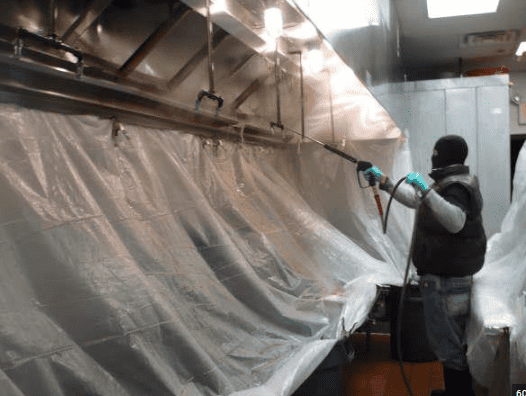
As someone who’s been knee-deep in the restaurant business here in sunny Florida, I can’t emphasize enough how crucial a clean and well-maintained hood system is for the safety and efficiency of your kitchen.
Now, let’s get into the nitty-gritty of the cleaning process. It’s not merely a swipe of a rag; it’s a meticulous process ensuring every grease spot and food particle is cared for. Here’s how it usually goes down:
Preparation
- Clearing the Area: The first step involves clearing the area under the hood. This means removing any cooking equipment, covering the kitchen appliances, and setting up a wastewater collection system to avoid a mess.
- Setting up Plastic Sheeting: Professional cleaners will drape plastic sheeting across the appliances and the floor, creating a funnel to collect wastewater efficiently.
Degreasing
- Applying Degreaser: A commercial degreaser is sprayed onto the hood, ducts, and fan to loosen the grease buildup. The strength of the degreaser is chosen based on the amount of buildup and the last cleaning date.
- Scraping Off Grease: Post-degreaser application, the thick layers of grease are scraped off manually. This step is crucial for heavily soiled systems.
High-Pressure Hot Water Cleaning
- Hot Water Pressure Washing: Now comes the satisfying part – blasting away the remaining grease using high-pressure hot water. This step not only removes the residual grease but also sanitizes the system.
Detailing
- Detailing: After the major cleaning, it’s time for detailing. This step involves wiping down all surfaces to ensure they are spotless and shining. This is what makes your hood look brand new.
Areas Covered
- What Gets Cleaned? The cleaning process encompasses the hood canopy, baffle filters, ducts, exhaust fans, and access panels. Essentially, the entire exhaust system, from the hood to the exhaust fan on the roof, gets a thorough cleaning.
Post-Cleaning
- Inspection and Reporting: A thorough examination is done once the cleaning is completed to ensure nothing is missed. A detailed report, often accompanied by before and after photos, is provided. Hence, you have a clear understanding of the services performed.
- Disposal of Wastewater: Lastly, the wastewater collected is disposed of safely and environmentally friendly, adhering to local laws and regulations.
So, when you’re pondering over How much restaurant hood cleaning cost, remember, it’s a meticulous process aimed at ensuring your kitchen remains a safe and hygienic environment to whip up those delicious dishes.
Plus, a clean hood system runs more efficiently, saving you money in the long run on energy costs. It’s a win-win.
How Often Should a Restaurant Vent Hood be Cleaned?
Now, let’s dive into a question that haunts many restaurant owners – “how often should the hood be cleaned?” Well, the frequency of cleaning largely hinges on the volume of cooking and the type of cuisine you serve.
Volume of Cooking
- High-Volume Restaurants: If your establishment is buzzing with customers from dawn to dusk, like many of the eateries I consult for here in Florida, you’ll need more frequent cleanings. We’re talking monthly cleanings to keep up with the heavy usage.
- Moderate-Volume Restaurants: A quarterly cleaning schedule suffice for moderately busy joints.
- Low-Volume Restaurants: If your restaurant has a more relaxed pace, bi-annual cleanings could work. However, even if the foot traffic is lower, take regular inspections to catch any potential issues early.
Type of Cuisine
- Grease-Heavy Cuisines: The grease buildup will be substantial if your menu is laden with fried foods and grilled meats. I often recommend a monthly cleaning schedule to my clients in such scenarios.
- Lighter Fare: On the flip side, if your menu is leaning towards salads, sandwiches, and other lighter fare, you might get away with less frequent cleanings.
Florida-Specific Insights
- Humidity and Grease: Florida’s humidity can be a game-changer. Moisture mixed with grease can lead to a sticky situation, literally. The resulting buildup can be more stubborn, nudging the cleaning schedule to a more frequent routine.
- Local Regulations: Florida has its regulations regarding restaurant hygiene and maintenance. Staying compliant is crucial to avoid any run-ins with the health department.
- Personal Observations: In my years of consulting, Florida-based restaurants often benefit from a more frequent cleaning schedule. The bustling tourist scene and the local love for fried and grilled goodies lead to substantial hood grime.
Drawing from these insights, it’s evident that the how often part of the hood cleaning equation isn’t a one-size-fits-all answer. It’s a tailored schedule based on your restaurant’s unique circumstances.
And remember, a clean hood isn’t just about compliance and avoiding fines; it’s about ensuring a safe and efficient kitchen that churns out delicious, hygienic food.
So, when contemplating how much does restaurant hood cleaning cost, consider it an investment into the heart of your restaurant – the kitchen!
How Long Does it Take to Clean a Restaurant Hood?
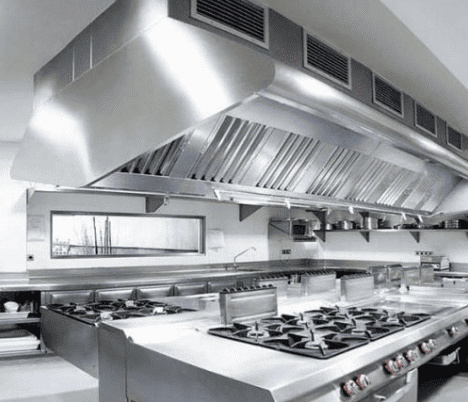
Cleaning a restaurant hood is not a swish-and-flick job; it needs time, patience, and much elbow grease. The duration of getting that shiny, grease-free result depends on several factors.
Size and Configuration of the Hood System
- Simple Systems: Smaller, simpler hood systems take about 3 to 4 hours to clean thoroughly. I’ve been in situations where a compact diner with a straightforward exhaust setup was sparkling clean in under three hours.
- Complex Systems: Conversely, larger or more complex systems can take 6 to 8 hours. Restaurants with extensive kitchen setups, multiple hoods, or extended ductwork will naturally require more cleaning time.
The Level of Grease Buildup
- Moderate Buildup: If your hood has an average level of grease buildup, the cleaning process could be shorter. Regular maintenance pays off here by keeping the cleaning duration reasonable.
- Heavy Buildup: Heavy grease accumulation? Brace yourself for a longer cleaning stretch. Sometimes, it can take a good part of the day to tackle the grime, especially if it’s been a while since the last cleaning.
Accessibility
- Easy Access: If all components of the hood system are easily accessible, the cleaning process will be quicker. Accessibility is a big-time saver in the cleaning process.
- Challenging Access: Conversely, hard-to-reach areas will add to the cleaning time. If your cleaning crew has to bring in extra equipment or remove obstacles to access the hood, it will stretch the cleaning duration.
The Skill and Experience of the Cleaning Crew
- Experienced Crew: A seasoned cleaning crew with the right tools can significantly reduce the cleaning time without compromising quality. Their expertise allows them to tackle even the most stubborn grease spots efficiently.
- Novice Crew: Less experienced crews might take longer to achieve the desired results. They may also need more advanced equipment that speeds up the process.
Unexpected Repairs
- Repairs: Sometimes, the cleaning process unveils necessary maintenance, which could extend the cleaning time. It’s crucial to account for such possibilities, especially if your hood system has yet to be maintained regularly.
Summary
The cleaning duration can vary widely from one restaurant to another. It’s a blend of the system’s size, the level of grease buildup, accessibility, the expertise of the cleaning crew, and surprises like repairs.
Each cleaning session allows you to gauge how long it typically takes for your establishment, helping you plan better for the next one.
Understanding the time it takes to clean your restaurant hood is part of managing operations smoothly.
It helps schedule the cleaning during off-hours or closed days to ensure minimal disruption to your business.
And remember, a thorough cleaning, no matter how long it takes, is integral to maintaining a safe, hygienic, and efficient kitchen.
Tips for Cleaning Grease off a Commercial Range Hood
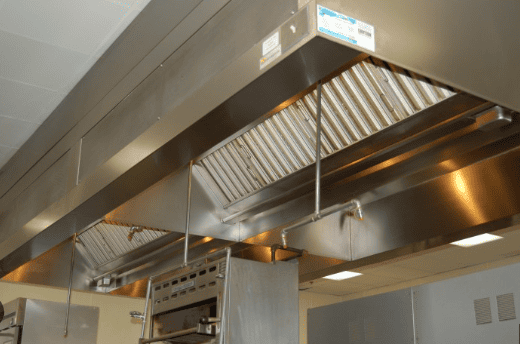
Having a professional come in for thorough hood cleaning is non-negotiable. However, you can still do something to maintain a cleaner hood between those professional cleanings.
With our diverse culinary offerings in sunny Florida, the grease can pile up quickly in our bustling kitchens.
Here are some DIY tips to tackle the grease and keep your commercial range hood in tip-top condition:
Daily Wipe Down
- Regular Wiping: At the close of each day, clean the hood’s exterior with a damp cloth to remove surface grease and grime. It’s a small task but goes a long way in keeping the grease at bay.
- Warm Water and Soap: A warm water and dish soap mixture can be your best friend. Use a sponge or a non-abrasive scrubber to clean the surface gently. The soap helps break down the grease, making it easier to wipe away.
Weekly Degreasing
- Baking Soda and Water: Create a paste by mixing baking soda and water. Apply this mixture to the greasy areas, allowing it to scrub the surface using a non-abrasive pad gently.
- Commercial Degreasers: There are commercial degreasers available that are designed for tackling tough kitchen grease. Spray the degreaser, allow it to sit as instructed, and wipe or scrub away the grease.
Monthly Maintenance
- Check and Clean Filters: Your hood filters work overtime to catch grease and other particles. Remove and clean them monthly. Warm, soapy water should do the trick, or you can pop them in the dishwasher for a thorough cleaning.
- Inspect Fan and Motor: Check the fan and motor for grease buildup. Compressed air cans are effective in removing built-up grease from inaccessible areas.
Mind the Dos and Don’ts
- Avoid Harsh Chemicals: You’ll want to steer clear of using any harsh chemicals or scrubbers because they could potentially harm the surface of your hood.
- Don’t Delay Repairs: If parts of your hood system need to be fixed, don’t procrastinate on repairs. Fixing a small problem now is cheaper than a big one later.
- Schedule Professional Cleanings: Despite your best DIY cleaning efforts, professional cleanings are essential to ensure the longevity and efficiency of your hood system. It also keeps you compliant with local and state fire codes, which is crucial for the safety of your restaurant.
A Clean Hood is a Happy Hood:
Incorporating these simple cleaning tasks into your routine will extend the time between professional cleanings and contribute to a safer, more efficient kitchen.
And hey, there’s something oddly satisfying about seeing a shiny, grease-free hood over your cooking station.
It’s like a badge of honor for your restaurant’s hygiene and professionalism.
Choosing the Right Hood Cleaning Service
When keeping your restaurant safe and compliant with health standards, hiring a reputable and certified hood cleaning service is paramount.
The task extends beyond upholding cleanliness to cultivate a secure and nurturing ambiance for your employees and guests.
It encompasses creating a pristine environment that fosters their well-being and is conducive to their overall health.
Having navigated the restaurant scene here in Florida for years, skimping on this aspect of restaurant maintenance differs from where you want to cut corners.
Here’s some seasoned advice on choosing the exemplary service for your hood cleaning needs:
Seek Certified Professionals
- Certification Matters: Look for companies that have certified technicians. Certification from the International Kitchen Exhaust Cleaning Association (IKECA) is a testament to the company’s adherence to industry standards and best practices.
- Experience and Reputation: A well-established company with a good reputation will likely provide reliable and thorough cleaning services. Check reviews, ask for references, and consider how long they’ve been in the business.
Get Multiple Quotes
- Compare Pricing and Services: Getting quotes from multiple cleaning services is wise. This gives you a better understanding of the cost and the services offered. Make sure that every quote contains a comprehensive breakdown of the services offered.
- Look Beyond Price: While being price-conscious is natural, the cheapest option is not always the best. Look at the value and the level of service being provided. A slightly higher priced service might offer a more thorough cleaning or better customer service.
Adherence to NFPA Standards
- Compliance is Key: The service you hire should adhere to NFPA 96 standards and the National Fire Protection Association’s ventilation control and fire protection code. This adherence ensures a thorough cleaning that minimizes fire risks.
- Documentation and Reporting: A reputable company should provide before and after photos and a detailed report of the services performed. This documentation is crucial for health inspections and insurance purposes.
Check Insurance and Liability
- Insurance Coverage: Ensure the cleaning company has insurance coverage. This protects you from liability in case of accidents during the cleaning process.
- Ask Questions: Feel free to inquire about their cleaning process, the chemicals utilized, and the expertise of their technicians. Don’t hesitate to seek clarification and ensure your peace of mind. A transparent and open communication indicates a company’s professionalism and reliability.
Establish a Regular Cleaning Schedule
Consistency is Crucial: Establish a regular cleaning schedule once you find a hood cleaning service that meets your expectations. Consistent cleanings are crucial for maintaining a safe and efficient kitchen exhaust system.
By researching and investing more in a reputable, certified hood cleaning service, you’re making a smart choice for your restaurant’s safety and long-term durability.
Remember, a clean, well-maintained hood system is less likely to cause fire hazards and will ensure a smoother operation in the bustling heart of your restaurant – the kitchen.
Conclusion
Navigating through the bustling restaurant industry, especially in the sun-soaked stretches of Florida, has always been a blend of exciting culinary adventures and meticulous attention to safety and hygiene.
One of the pivotal aspects of maintaining a safe, compliant, and inviting eatery is ensuring the cleanliness and functionality of your restaurant’s hood system.
We dived into the nitty-gritty of how much restaurant hood cleaning costs and unearthed various factors that influence this cost.
From the location of your restaurant, the size and configuration of your hood system to the condition it’s in, each aspect plays a significant role in the overall cost of cleaning.
We also discussed the importance of water availability and any additional requirements that might pop up during the cleaning process.
The discussion ventured into hourly rates versus flat fees, providing a more precise lens to gauge what might suit your budget and requirements better.
The cleaning process was laid out, shedding light on the meticulous effort it takes to keep your hood system gleaming and functioning seamlessly.
The frequency of cleaning is to be noticed. It’s a variable determined by the volume and cooking your restaurant engages in.
We also touched upon the duration of cleaning a restaurant hood, emphasizing that a well-maintained system takes less time to clean and costs less in the long run.
We also glanced at the cost spectrum, comparing the investment in a new commercial hood to the cost of regular cleaning, underscoring the latter’s long-term savings and safety benefits.
A sprinkle of DIY tips was shared for those minor grease-cleaning tasks. However, the importance of professional cleaning stood unchallenged.
Choosing the exemplary hood cleaning service is a decision that resonates through the safety, hygiene, and operational efficiency of your restaurant. Ensuring the service is reputable, certified, and adheres to NFPA standards is crucial.
In wrapping up, our discussion circles back to the core principle of maintaining a safe, hygienic, and welcoming environment in your restaurant.
Investing in regular, professional hood cleaning is not just a statutory compliance checkbox but a hallmark of excellence in maintaining a restaurant that resonates with cleanliness and safety.
So, as you stride forward in your culinary journey, ensuring a clean and well-maintained hood system is a stride toward success, safety, and savory satisfaction.
Jeff Smith is a Restaurant Consultant with over 20 years of hospitality experience ranging from server to owner and general manager. He focuses on Restaurant POS technology as well as restaurant marketing. Check out our world-famous restaurant resources page for a comprehensive offering of hand-picked resources and tools to help your business. You can also check out some of our other restaurant business articles.

